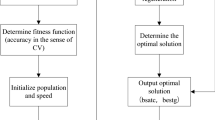Abstract
This paper focusses on real-time detection and abnormal state prediction through a set of wireless equipment of fire water system to provide a better solution for fire inspection. The main goal of this research is to improve the fire extinguishing efficiency. Firefighting and rescue operations are urgent, and concealed or dry fire hydrants may cause failure cases of firefighting. To prevent this situation, this paper proposed the wireless equipment of fire water system to monitor the multiple indicators of outdoor hydrant, indoor hydrant, and sprinkler network. The objective of the experiment is to realize the real-time monitoring and obtain the data information of the state of the fire water system. Also, the multiple linear regression analysis method is adopted to analyze the monitored water pressure data to achieve rapid identification of abnormal water pressure value. The results indicate that the data transmission of the wireless equipment of fire water system is reliable, the pressure is accurately monitored below 0.40 MPa, and the average relative error of abnormal water pressure monitoring results is less than 6%. The new equipment and algorithm are used not only to monitor the state of water supply system, but also to depict the change of water consumption in the monitoring environment and predict the unconventional state, which provides directional help for fire patrol and inspection.











Similar content being viewed by others
References
Song YL (2004) Discussion on fire characteristics and fire countermeasure of ancient buildings. Fire Sci Technol 23:396–398 (in Chinese)
Liu D, Xu Z, Yan L, Wang F (2020) Applying real-time travel times to estimate fire service coverage rate for high-rise buildings. Appl Sci 10(19):6632. https://doi.org/10.3390/app10196632
Jung BS, Filion Y, Adams B et al (2013) Multi-objective design optimization of branched pipeline systems with analytical assessment of fire flow failure probability. Water Resour Manage 27:3663–3678. https://doi.org/10.1007/s11269-013-0372-6
Yadav A, Patel P (2014) Assessment of water requirement and calculation of fire flow rates in water based fire fighting installation. Int J Innov Eng Technol 4:5–12
Peckens CA, Kane MB, Zhang Y, Lynch JP (2014) Permanent installation of wireless structural monitoring systems in infrastructure systems. Sens Technol Civ Infrastruct. https://doi.org/10.1533/9780857099136.480
Ma M, Khan H, Shan W, Wang Y, Ou JZ, Liu Z, Kalantar-Zadeh K, Li Y (2017) A novel wireless gas sensor based on LTCC technology. Sens Actuators B 239:711–717. https://doi.org/10.1016/j.snb.2016.08.073
Chae MJ, Yoo HS, Kim JY, Cho MY (2012) Development of a wireless sensor network system for suspension bridge health monitoring. Autom Constr 21:237–252. https://doi.org/10.1016/j.autcon.2011.06.008
Lim JS, Kim J, Friedman J, Lee U, Vieira L, Rosso D et al (2011) SewerSnort: a drifting sensor for in situ wastewater collection system gas monitoring. Ad Hoc Netw 11:1456–1471. https://doi.org/10.1016/j.adhoc.2011.01.016
See CH, Horoshenkov KV, Abd-Alhameed RA, Hu YF, Tait SJ (2012) A low power wireless sensor network for gully pot monitoring in urban catchments. IEEE Sens J 12(5):1545–1553. https://doi.org/10.1109/JSEN.2011.2174354
Liu J, Tian Y, Qi H (2012) Wireless sensor networks for fire detection in the library environment. Appl Mech Mater 166–169:2684–2687. https://doi.org/10.4028/www.scientific.net/amm.166-169.2684
Pan L (2020) Preventing forest fires using a wireless sensor network. J Forest Sci 66:97–104. https://doi.org/10.17221/151/2019-JFS
Varela N, Díaz-Martinez JL, Ospino A, Zelaya N (2020) Wireless sensor network for forest fire detection. Proced Comput Sci 175:435–440. https://doi.org/10.1016/j.procs.2020.07.061
Aung NN, Crowe E, Liu X (2015) Development of self-powered wireless high temperature electrochemical sensor for in situ corrosion monitoring of coal-fired power plant. ISA Trans 55:188–194. https://doi.org/10.1016/j.isatra.2014.09.003
Guan YX, Fang Z, Wang TR (2018) Fire risk assessment and daily maintenance management of cultural relic buildings based on zigbee technology. Proced Eng 211:192–198. https://doi.org/10.1016/j.proeng.2017.12.004
Dong WH, Wang L, Yu GZ, Mei ZB (2016) Design of wireless automatic fire alarm system. Proced Eng 135:412–416. https://doi.org/10.1016/j.proeng.2017.12.004
Funding
Funding was provided by National Key Research and Development Program of China (Grant No. 2017YFC0806600).
Author information
Authors and Affiliations
Corresponding author
Additional information
Publisher's Note
Springer Nature remains neutral with regard to jurisdictional claims in published maps and institutional affiliations.
Rights and permissions
About this article
Cite this article
Wu, J., Mao, J., Hu, J. et al. Monitoring and Prediction of Fire Water System Based on Wireless Detection Method. Fire Technol 58, 2213–2228 (2022). https://doi.org/10.1007/s10694-022-01235-0
Received:
Accepted:
Published:
Issue Date:
DOI: https://doi.org/10.1007/s10694-022-01235-0




